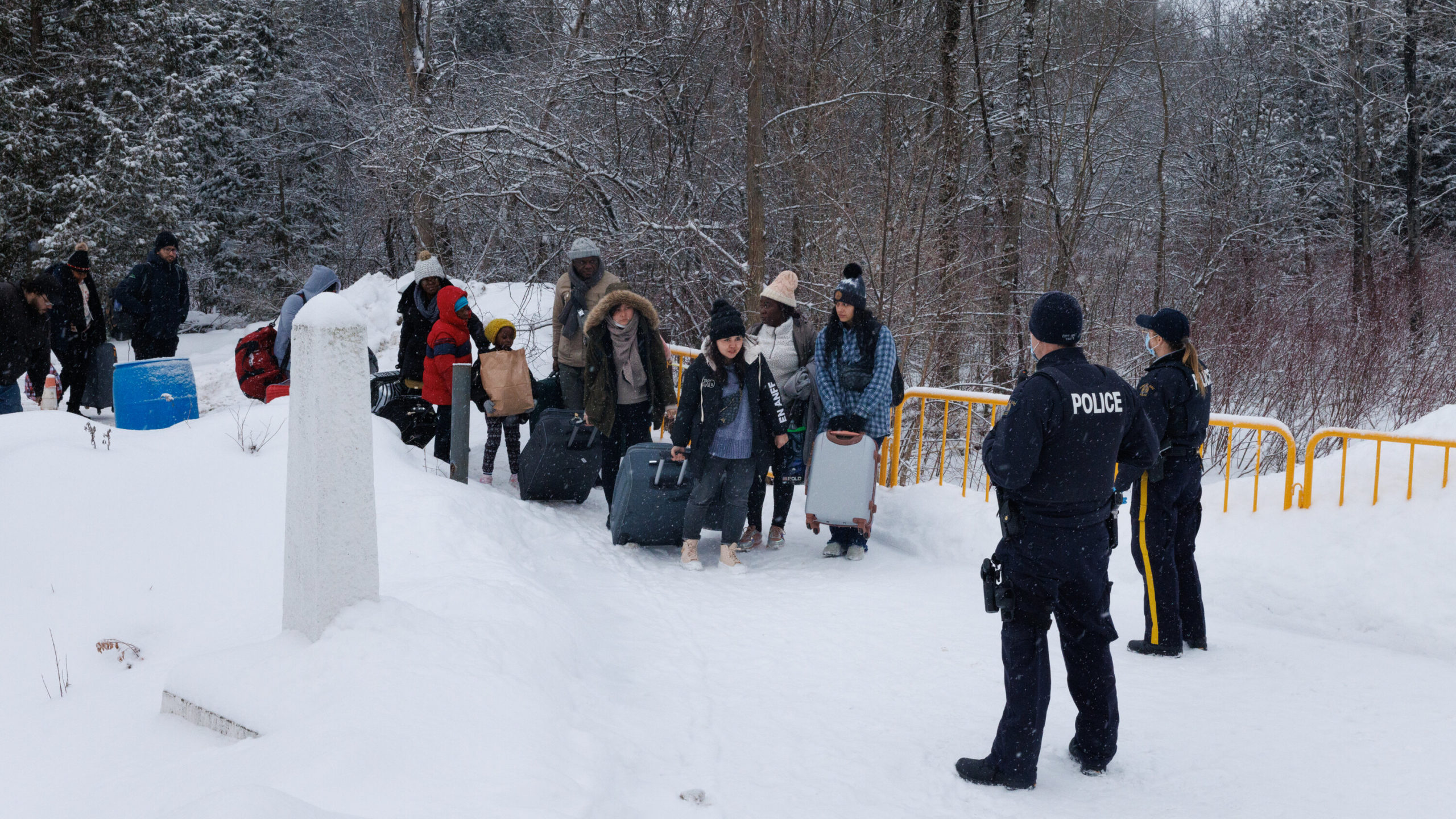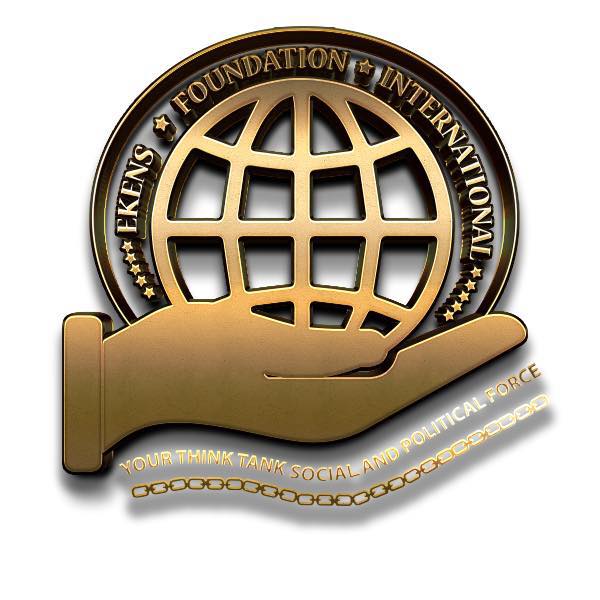info@ekensfoundation.org
Refugees Crossing From America to Canada
- Home
- Blog • Uncategorized
- Refugees Crossing From America to Canada

Refugees Crossing From America to Canada
Last year, nearly 40,000 migrants crossed into Canada at an unofficial border crossing at the end of a remote rural road in upstate New York—a record number—to seek asylum. Many are driven by the belief that the country is more welcoming than the US. But can Canada handle the influx?
Thank you for reading this post, don't forget to subscribe!On a snowy winter day, Roxham Road is cold and quiet. The silence is interrupted by the sound of wheels approaching the end of the path or the crunching of footsteps on snow.
Around 150 migrants are dropped off here each day, determined to step foot into Canada. Many began their journey as far away as Brazil, with this road in New York State as their finish line.
Roxham Road is not an official border point. There are no border agents at the end of it; only police officers arrest those who cross.
But it has become known as an accessible spot to enter Canada from the US in order to claim asylum.
Last year marked the highest influx of migrants into Canada via that pathway, with thousands lured by the country’s reputation for helping those fleeing war and conflict.
The influx has led to growing frustration on both sides of the border about the path, increasing concerns about its safety, and questions about what the future holds for those who make the journey.
Roxham Road rose to national attention in 2017 when migrants, fleeing displacement and conflict, began crossing there in large numbers.
Some pinned its sudden popularity to fears of deportation from the US under the Trump administration, others to a tweet by Prime Minister Justin Trudeau that read, “To those fleeing persecution, terror, and war, Canadians will welcome you.”
The influx caught Canadian officials off guard. Montreal’s Olympic Stadium was briefly converted into housing for newly arriving migrants. The federal government tried to stem the tide with warnings that arrival in Canada was not an automatic ticket to stay.
The COVID-19 pandemic closed the route under emergency health measures enacted by the federal government, but demand for a safe haven never dissipated.
Thousands of asylum seekers came again when those measures were lifted some 16 months ago.
Many come from Haiti, a country rocked in recent months by political and gang violence. There has also been a surge of people arriving from Latin American countries like Venezuela and Colombia, or from as far away as Afghanistan, all dealing with their own domestic turmoil.
At the same time, the Biden administration has extended some Trump-era pandemic policies, like Title 42, which has been used to block land entry at the US-Mexico border for some migrants.
Migrants who spoke to the BBC in Quebec said they increasingly view the US as not a viable country for refuge, where asylum claims can often take years before they are heard, and where they feel they are not welcomed.
Joshua arrived in Montreal two days after Christmas and now shares a rented flat with other migrants as he awaits for his claim to be heard.
A native Venezuelan, he had been living in exile in Chile for five years without travel documents when he decided to make the trek up to Canada, he told the BBC.
“Other countries, they’re not so friendly with irregular immigrants,” said Joshua, whose name has been changed to protect his identity as someone fleeing political persecution.
But Canada, he said, has welcomed him.
Behind the influx is a nearly two-decade-old agreement with the US—the Safe Third Country Agreement—which requires migrants to file for asylum in the first’safe’ country they step foot in.
A migrant coming from the US would be turned away at a Canadian border point, but Roxham Road, an unofficial path, is a loophole.
Mr. Trudeau has dismissed calls to close the crossing, suggesting it would be futile given the thousands of kilometers of undefended border with the US and that migrants would dangerously attempt to cross elsewhere.
He has focused instead on renegotiating the agreement, an issue he is expected to raise with Joe Biden when the president visits Ottawa later this week.
But the prime minister is facing pressure to take action as the new arrivals strain social services, especially in Quebec, where many of the migrants settle.
Quebec Premier Francois Legault has called the situation in the province untenable, saying services have been “pushed to the brink” and that some migrants are facing homelessness as a result.
“It is becoming increasingly difficult to receive asylum seekers with dignity,” he said in February.
Migrants also face a growing backlog of refugee claims, which grew from 56,300 in January to almost 71,000 by December—a 26% increase. Claims can now take up to two years to process. Around 28% of all claims were rejected last year, meaning success is not guaranteed.
There are also lengthy waits for work permits.
It used to take a week to get the documents necessary to apply for work as a new asylum seeker. Now, the wait is nearly two years, said Maryse Poisson, who works at the Welcome Collective, an organization assisting newcomers in Montreal.
Many migrants have struggled to make ends meet as a result, and some have resorted to accessing food banks and other social supports as they wait, advocates told the BBC.
“Some of them are in a situation where they have to accept work under the table,” said Suzanne Taffot, an immigration lawyer based in Montreal who helps asylum seekers with their claims.
Ms. Poisson said she fears some of them are falling through the cracks without additional government support.
We’re really worried that the most vulnerable, those that have trauma, those that have a lot of barriers of language, don’t get the help they need at all,” she said.
US border agents have noted an uptick in people crossing back from Canada. In January, US Border Patrol apprehended 367 people attempting to cross from north to south—more than the number of such crossings in the last 12 years combined.
Republican lawmakers have since spoken out about a “crisis” brewing at the northern border.
Some of those who cross back have done so out of frustration with being unable to find work in Canada or to reunite with family, people who work with asylum seekers in Montreal said.
Despite the growing challenges in Canada, migrants continue to cross Roxham Road in record numbers, undeterred even in the midst of the bitter Canadian winter.
On the New York side of the crossing, taxi drivers Terry Provost and Tyler Tambini said they often drive people to the border from the Plattsburgh bus station, sometimes for free, as some migrants run out of money towards the end of their journey.
“This guy had no money. He’s been waiting and waiting at a motel,” said Mr. Provost as he dropped off an asylum seeker from Afghanistan.
Once the migrants cross, they are greeted by members of the Royal Canadian Mounted Police, who warn them that they will be placed under arrest if they step forward.
Once a ditch with some brush and trees, since 2017, the Canadian side of the border has turned into a small police compound, complete with trailers to process those who cross and buses that wait to bring the newcomers to hotels nearby.
Mr. Provost said he sees people hesitate before they make the final step, unsure of what awaits them on the other side.
But for migrants like Joshua, Canada is the last safe place on the line.
“The American dream died many years ago,” he told the BBC. “Montreal is my new home. The only home I have.

